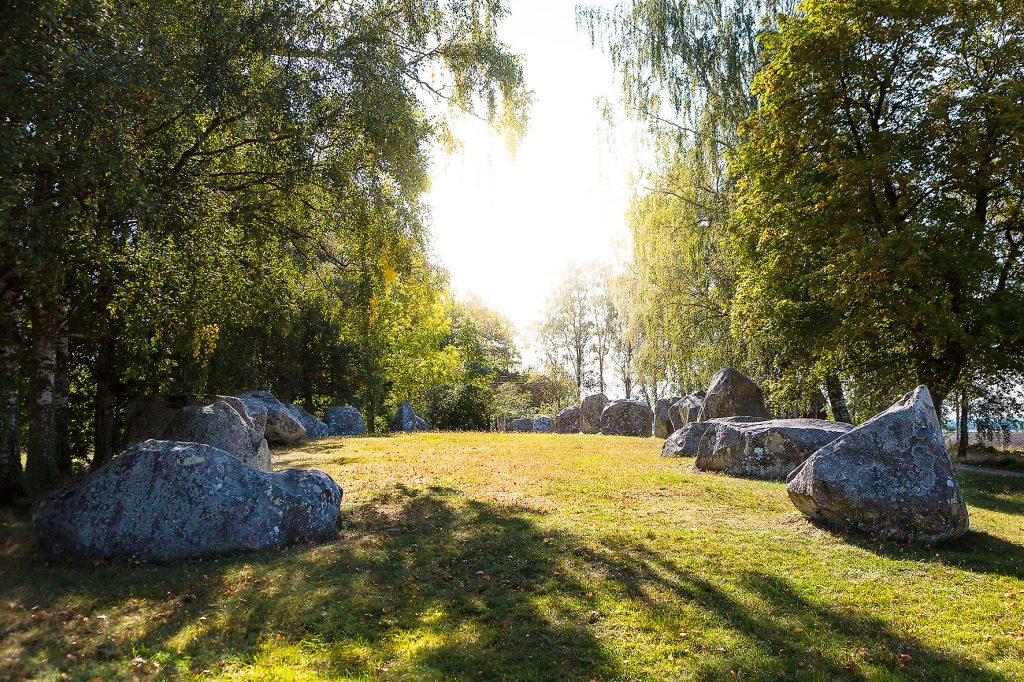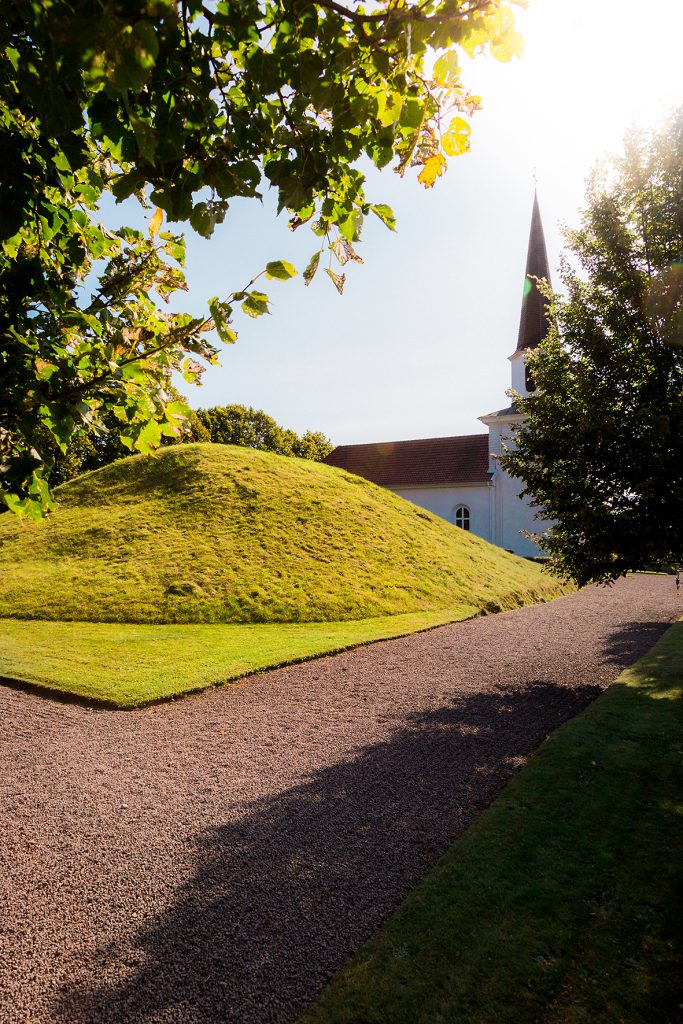

TIDAN – Eastern Vänern
A riddle waiting to be solved in Askeberga


Just outside the small town of Tidan, in Askeberga, Sweden’s second largest stone setting(after Ale Stenar in Skåne) can be found. The impressive monument is also one of Sweden’s great unsolved mysteries. Noone knows what the stone setting was used for or who built it. It is however estimated to be from the Late Iron Age, around 500 B.C.
The monument consist of 24 lump shaped stones, about two metres high and close to 20 tonnes in weight. The stones are placed in an oval shape which measures 55 metres at its longest and 18 metres at its widest points. The formation is not really what’s called a ship’s setting as the characterstic bow stones are missing but it is also too large to be what’s called a judging ring. The monumnet is therefor called Rane Stones after the mythological ruler King Rane.
In the area around Tidan and Askeberga many graves can be found from the different eras of the Iron Age and by the nearby Flistad church is a large grave mound, called King rane’s mound, believed to have been erected some time between 800 and 1100 B.C.
Maybe these two monuments are connected to the large Viking age farmhouse that once existed here. Perhaps did that house belong to the local ruler in those days? A lot is still unclear and adds to the mystery of the Askeberga stone monument.
The monument consist of 24 lump shaped stones, about two metres high and close to 20 tonnes in weight. The stones are placed in an oval shape which measures 55 metres at its longest and 18 metres at its widest points. The formation is not really what’s called a ship’s setting as the characterstic bow stones are missing but it is also too large to be what’s called a judging ring. The monumnet is therefor called Rane Stones after the mythological ruler King Rane.
In the area around Tidan and Askeberga many graves can be found from the different eras of the Iron Age and by the nearby Flistad church is a large grave mound, called King rane’s mound, believed to have been erected some time between 800 and 1100 B.C.
Maybe these two monuments are connected to the large Viking age farmhouse that once existed here. Perhaps did that house belong to the local ruler in those days? A lot is still unclear and adds to the mystery of the Askeberga stone monument.